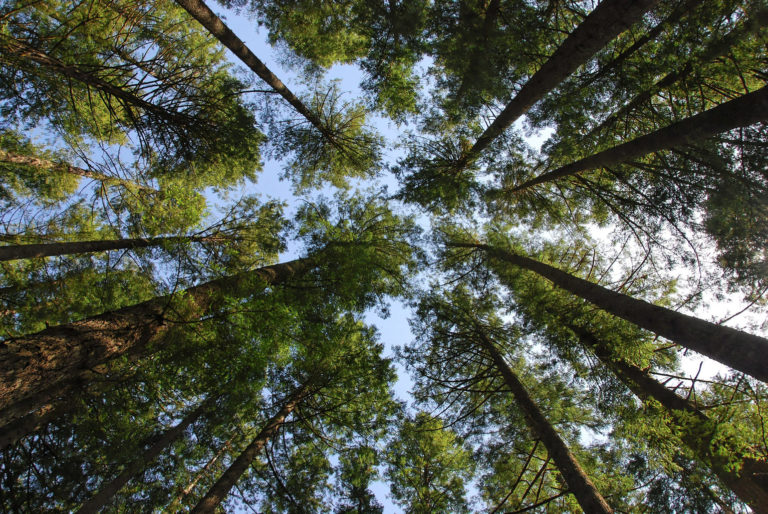To what extent could planting trees help solve climate change?

What role do forests play in the carbon cycle and climate change?
Combined with the sun’s energy, the carbon captured by trees from the atmosphere is converted into trunks, branches, roots and leaves via the process of photosynthesis. It is stored in this ‘biomass’ until being returned back into the atmosphere, whether through natural processes or human interference, thus completing the carbon cycle.
The destruction and degradation of forests contributes to climate change through the release of carbon dioxide (CO2), while the planting of new forests can help mitigate against climate change by removing CO2 from the atmosphere. For example, the UK’s Forestry Commission illustrates the possible extent of the effect in the following terms: ‘the carbon sequestered (or stored) by half a hectare of conifer woodland … can compensate for the carbon dioxide emissions associated with car fuel consumption during one average driver’s lifetime.’
What is the extent of tree planting and what role can plantations play in reducing CO2 levels?
Tree planting and plantation forestry are well established in both the private and public sectors. The most recent data from the UN’s Food and Agriculture Organisation suggests that plantation forests comprised an estimated 7% of global forest area in 2015. Most of these forests were established in areas that were previously not under forest cover, at least in recent years (this is known as ‘afforestation’). Trees are also planted as part of efforts to restore natural forests (‘reforestation’), as well as in agroforestry, which involves increasing tree cover on agricultural land and pastures.
Under certain conditions, plantations can grow relatively fast, thus absorbing CO2 at higher rates than natural forests. In the absence of major disturbances, newly planted or regenerating forests can continue to absorb carbon for 20 to 50 years or more. In comparison to preventing the loss of natural forests, however, tree planting has the potential to make only a limited contribution to reducing CO2 levels in the atmosphere. In 2000, a special report by the Intergovernmental Panel on Climate Change (IPCC) concluded that tree planting could sequester (remove from the atmosphere) around 1.1–1.6 gigatonnes (Gt) of CO2 per year. A more recent paper, published by Oxford University in 2015, estimated that afforestation could remove in the range of 1–3 Gt of CO2 per year in 2030. For comparison, total global greenhouse gas emissions were equivalent to 49.3 Gt of CO2 in 2016.
Some tree-planting projects established to absorb CO2 have turned out to be non-viable due to the cost of acquiring inputs or protecting young trees from fire, drought, pests or diseases. The cost of land is another barrier to widespread tree-planting, especially where there is competition with other land uses such as food or biofuel production.
Tree planting under the Kyoto Protocol and Paris Agreement
Tree planting and reforestation were included as activities eligible for finance under the Kyoto Protocol. Kyoto’s rules and procedures, however, restricted the scale and scope of these activities, with projects struggling to get off the ground and as a result the carbon sequestered has been almost negligible. The Paris Agreement on climate change encourages the ‘enhancement of forest carbon stocks in developing countries’. India, for example, has allocated US$6.2 billion to reforest 95 million hectares by 2030 as part of its commitment to the Paris Agreement.. But overall, tree planting is unlikely to be implemented on a scale to reach even the relatively modest potential contribution outlined by the IPPC – especially in the absence of a high carbon price.
This FAQ was updated in January 2018. The original FAQ was written by Charles Palmer and reproduced from the following article: To what extent could planting trees help solve climate change? © The Guardian, 2012, used under a Creative Commons No Derivative Works licence.

